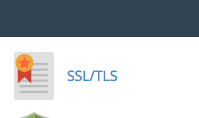Shortcodes make it easier to customize wordpress pages quickly. WordPress comes with pre-built shortcodes but we’re going to build one from scratch. You will need to add a function to your child theme’s functions.php file. This particular code builds an ordered list of all our wordpress sites under our sls.gmu.edu domain using the get_sites() function. This function will work on all WP platforms 4.3 and above.
/*
* Author: Matthew
* This function creates a shortcode usable in all sites using the scalia law theme to create an ordered list of
all multisites
*/
function scalia_list_sites() {
$subsites = get_sites(); //creates variable using get_sites
if ( ! empty ( $subsites ) ) {
$html = '
- '; //sets up class
foreach( $subsites as $subsite ) {
$subsite_id = $subsite->blog_id; //finds sites by id
$subsite_name = get_blog_details( $subsite_id )->blogname; //creates variable for site name
$subsite_link = get_blog_details( $subsite_id )->siteurl; //creates variable for site url
$html .= '< li class="site-' . $subsite_id . '">< a href="' . $subsite_link . '">' . $subsite_name . '< /a >< /li >'; //builds individual list items
sort($html);
}
$html .= '< /ol >';
return $html; //returns the list
}
}
add_shortcode('scalia_list', 'scalia_list_sites'); //calls function and sets up [ scalia_list ] custom short code
This goes in your child-theme’s functions.php file.





